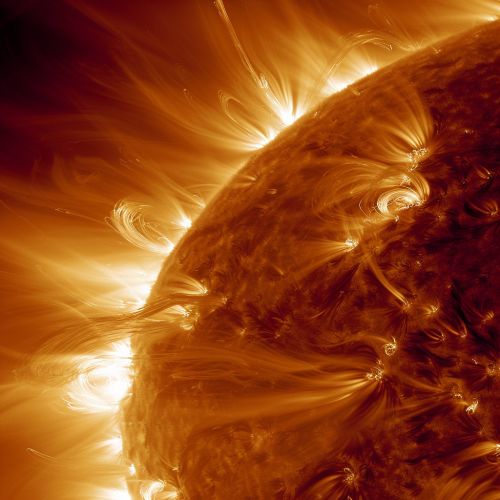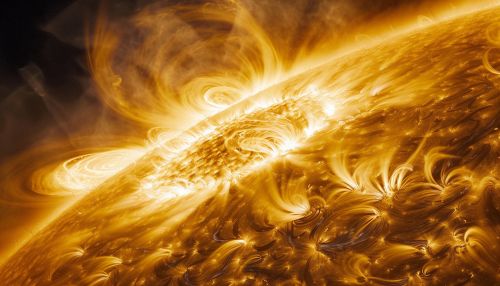Sunspot
Introduction
Sunspots are temporary phenomena on the photosphere of the Sun that appear as spots darker than the surrounding areas. They are regions of reduced surface temperature caused by concentrations of magnetic field flux that inhibit convection. Sunspots usually appear in pairs of opposite magnetic polarity.
Characteristics
Sunspots are darker, cooler areas on the Sun's photosphere with a temperature of about 3,000–4,500 K (2,727–4,227 °C), compared to the surrounding photosphere which has a temperature of approximately 5,500 K (5,227 °C). The dark area of the sunspot is called the umbra, which is surrounded by the lighter penumbra. The reduced temperature is due to the increased magnetic flux, which inhibits the convective transport of energy from the Sun's interior to its surface.


Formation
Sunspots are formed from the solar magnetic field. The Sun's magnetic field goes through a cycle known as the Solar Cycle, which lasts approximately 11 years. During this cycle, the number of sunspots increases to a maximum and then decreases to a minimum. This cycle is driven by the differential rotation of the Sun, which causes the magnetic field lines to become twisted and concentrated in certain areas. These concentrated areas of magnetic field inhibit the convective transport of heat from the Sun's interior to its surface, resulting in a cooler, darker area known as a sunspot.
Observation and Measurement
Sunspots have been observed since ancient times, with the earliest recorded observations made by Chinese astronomers in 364 BC. However, it was not until the invention of the telescope in the early 17th century that detailed observations were made. The first telescopic observations of sunspots were made by Galileo and Thomas Harriot in 1610.
Sunspots are measured in terms of their area, with the smallest sunspots being about the size of Earth. The largest sunspots can be up to 50,000 kilometers in diameter. The number of sunspots at any given time varies, but the average number is about 100.
Effects on Earth
Sunspots can have significant effects on Earth. They are associated with solar flares and coronal mass ejections (CMEs), which can cause geomagnetic storms that can disrupt communication systems and power grids on Earth. They also have a slight effect on the Sun's luminosity, and thus the Earth's climate. During periods of high sunspot activity, known as solar maximum, the Sun is slightly brighter than during periods of low sunspot activity, known as solar minimum.
